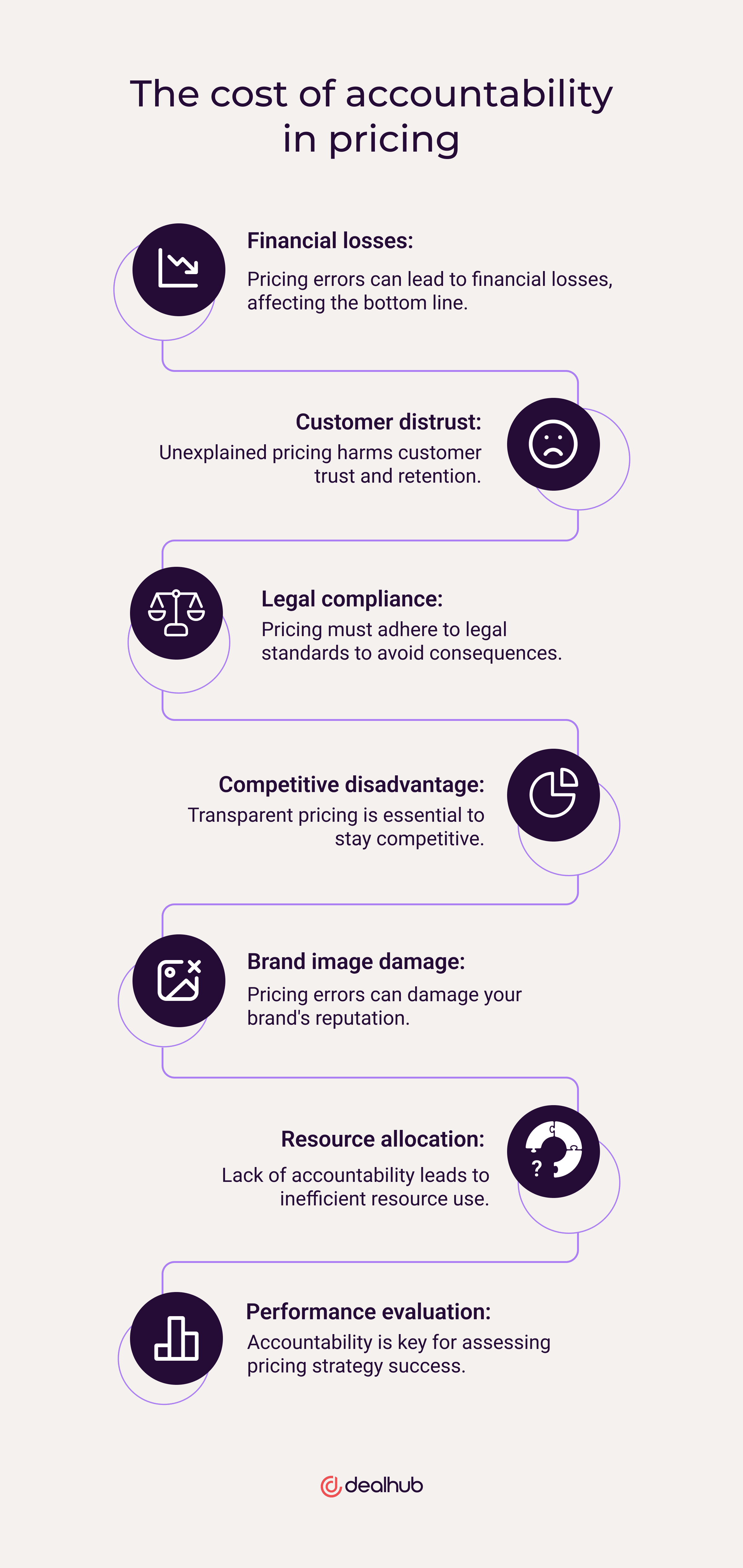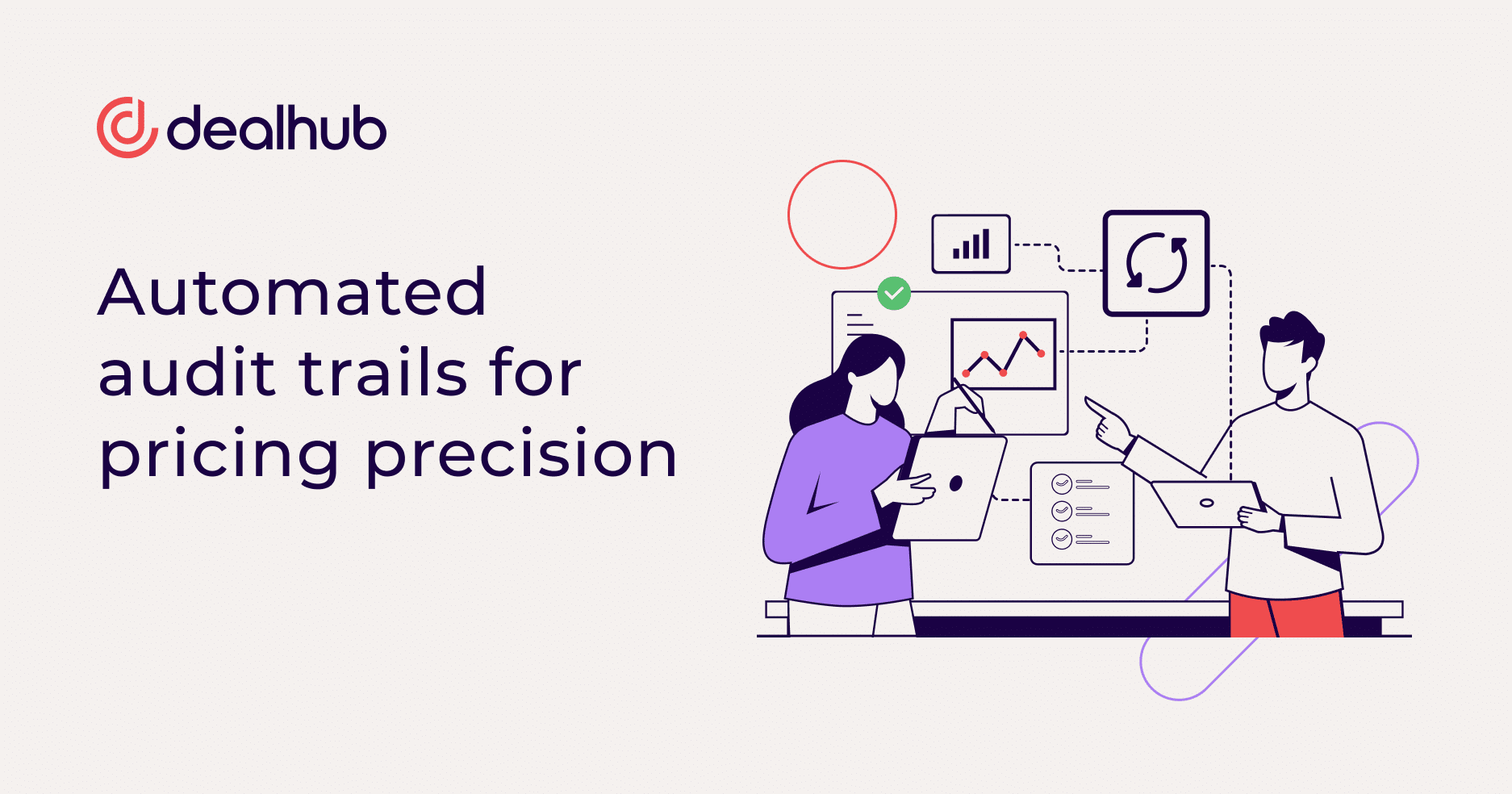The importance of automation in pricing management cannot be overstated. If you are keen on optimizing your pricing strategies with a focus on precision and seek guidance on maintaining agility in the face of pricing complexities, you have found the right resource. Join us as we delve into the concept of automated audit trails and their pivotal role in ensuring the maintenance of comprehensive and clear pricing records. We will provide insights into the significance of transparency, accountability, and real-time tracking, equipping you to enhance pricing accuracy and leverage this precision to revolutionize your pricing strategies moving forward.
The need for agility in pricing management
In the face of dynamic market conditions and evolving customer expectations, organizations must exhibit pricing flexibility. However, traditional manual pricing processes have become inadequate to match the pace of these changes driven by shifting customer demands. Fortunately, businesses can embrace the adoption of automated audit trails, presenting a solution that empowers them to promptly respond to market dynamics and customer requirements. These audit trails serve as catalysts for agility in pricing management, equipping organizations with the capability to make well-informed decisions that align with current market realities.
Automated audit trails provide pricing transparency
Automated audit trails act as an effective overseer over pricing changes. They provide a transparent view of every alteration made to provide a detailed record of who made the change, when it occurred, and what the change involved. This transparency is not only beneficial for internal decision-makers – it also fosters trust with customers. After all, knowing that pricing changes are meticulously recorded builds a sense of reliability and credibility in the eyes of the customer.
Picture this typical scenario: a customer sees a sudden price adjustment and flags it with your team. Do you understand why the adjustment happened, and can you provide your customer with precise, transparent reasoning for the change? Companies that can’t explain such changes risk damaging customer relationships. However, with automated audit trails, you can effortlessly trace the change back to its origin, providing clarity and resolving issues promptly. This level of clarity is necessary for today’s customer-centric business landscape. It allows you to be open with your clients so that your organization can maintain a contented customer base.
Transparency in pricing builds trust
Transparency in pricing is also the cornerstone for building trust with customers. Customers who understand the rationale behind pricing changes and see a clear trail of those adjustments maintain a sense of confidence and loyalty to your brand. Automated audit trails meet customer expectations for transparency – and exceed them – by providing a comprehensive view of the entire pricing history.
Accountability in pricing management ensures accuracy
Accountability is paramount when making price optimization decisions. Risks associated with the lack of accountability in pricing are substantial – from financial repercussions to damaged customer relationships. Without accuracy and accountability, organizations fun the risk of:

Financial losses. Without clear accountability, there is a risk of unintentional pricing errors, such as incorrect discounts, inaccurate calculations, or inconsistent pricing across channels. Sizable or repeated errors can result in financial losses and negatively impact the bottom line.
Customer distrust and dissatisfaction. If customers do not understand pricing decisions, they lose confidence in your product or service. This distrust can harm long-term customer relationships and negatively affect customer retention, increasing churn rates.
Legal and regulatory compliance issues. Pricing decisions must adhere to legal and regulatory standards. Without accountability, there is an increased risk of unintentional pricing violations . This can lead to fines, legal consequences, and damage to an organization’s reputation.
Loss of competitive advantage. Competitors with more transparent and accountable pricing practices can capitalize on the perceived weaknesses, potentially gaining market share.
Brand image damage. Inconsistencies or errors in pricing, coupled with a lack of accountability, can damage a brand’s reputation. Adverse publicity and customer complaints about unfair pricing practices can affect the organization’s image.
Inefficient resource allocation. Without accountability, tracking and analyzing the effectiveness of pricing strategies becomes challenging. An organization may continue to invest in strategies that do not yield the desired financial outcomes.
Difficulty in performance evaluation. Accountability is crucial for evaluating the performance of pricing strategies and the individuals responsible for pricing decisions. Lack of accountability makes it difficult to assess the success or failure of specific pricing initiatives and hinders the organization’s ability to refine its approach.
To mitigate these risks, organizations must prioritize implementing systems and processes that ensure accountability in pricing decisions. This includes establishing clarity around roles and responsibilities, implementing automated audit trails, and fostering a culture of transparency and integrity within the organization.
Real-time tracking for pricing precision
The inability to audit pricing promptly has repercussions beyond accountability. Delayed pricing information can be detrimental in today’s fast-paced business environment in many ways, including:
Missed market opportunities. Prices in dynamic markets can fluctuate rapidly, and delayed information may result in organizations missing the ability to capitalize on favorable conditions or adjust their strategies in response to market shifts.
Inaccurate decision-making. Organizations relying on outdated data may make decisions based on information that no longer accurately reflects the current market conditions. This can result in suboptimal pricing strategies, affecting profitability and competitiveness.
Risk of pricing errors. With out-of-date pricing, there is an increased risk of pricing errors. Outdated pricing may lead to discrepancies in invoicing, causing confusion and customer dissatisfaction.
Lack of agility. A lack of real-time data hampers the organization’s ability to react to customer preferences and market changes on the fly.
Difficulty in forecasting. Accurate forecasting relies on real-time data. Delays in pricing information can result in inaccuracies in predicting future market trends and customer behavior.
Increased operational costs. Relying on outdated pricing may lead to inefficient processes, excess inventory, and the need for corrective actions, all of which contribute to higher operational expenses.
Implementing real-time tracking in pricing management can ensure your company stays ahead of the curve. Since automated audit trails enable organizations to track pricing changes as they happen, they provide instant insights into market fluctuations and customer behavior. This can ensure your company can remain competitive, capitalize on opportunities, and lower costs over time.
Implementing automated audit trails in pricing management
Implementing automated audit trails requires a strategic approach. Many moving pieces and organizational requirements need to be considered before implementation. For example, companies must start by understanding organizational needs for a successful rollout. Before implementing audit trail solutions, it’s integral to thoroughly assess your organization’s pricing management requirements. That includes understanding the specific challenges and goals related to pricing transparency, accountability, and real-time tracking. This understanding will guide the customization of the automated audit trail system to meet your organization’s unique needs.
Once you have a sound understanding of your company’s needs, it’s time to select a comprehensive pricing automation system that includes robust audit trail functionalities. The system should be capable of tracking and recording all pricing changes in real-time, with detailed information on who made the change, when it occurred, and the specific modifications made. Ensure that the system works seamlessly with your existing CRM and pricing management infrastructure. Integrating with data analytics tools is vital to gaining deeper insights into pricing performance.
Remember to clearly define roles and responsibilities for individuals involved in pricing decisions. Establishing accountability from the outset is crucial. Designate roles for pricing analysts, managers, and other relevant stakeholders and ensure each role is associated with specific permissions and access levels within the automated audit trail system. Implement secure user authentication and authorization processes to ensure that only those authorized to can access and modify pricing information. This enhances data security and prevents unauthorized changes. Utilize multi-factor authentication (MFA) and role-based access controls to strengthen the system’s security.
Company-wide adoption ensures success. Therefore, train your teams on the importance of accurate and timely record-keeping using automated audit trails. Ensure that team members understand how to use the pricing automation system effectively. This includes providing training on making pricing changes, accessing audit trail information, and resolving any discrepancies that may arise. Alongside training, develop and document standard operating procedures (SOPs) for pricing management, including automated audit trails. Clearly outline the steps to be followed when making pricing changes, the information to be recorded, and the process for reviewing and addressing discrepancies. SOPs provide a standardized framework for pricing decisions and ensure consistency.
Once you’ve implemented your solution, establish a routine for regularly reviewing and analyzing the data recorded in the audit trail. This proactive approach contributes to continuous improvement in your pricing strategy and decision-making processes.
Transforming pricing with agility and automation
The transformative power of agility and automation in pricing cannot be overstated! Embracing automated audit trails revolutionizes pricing strategies, offering unparalleled transparency, accountability, and real-time tracking. Organizations prioritizing these elements gain a competitive edge in the market, building customer trust and ensuring pricing precision.








